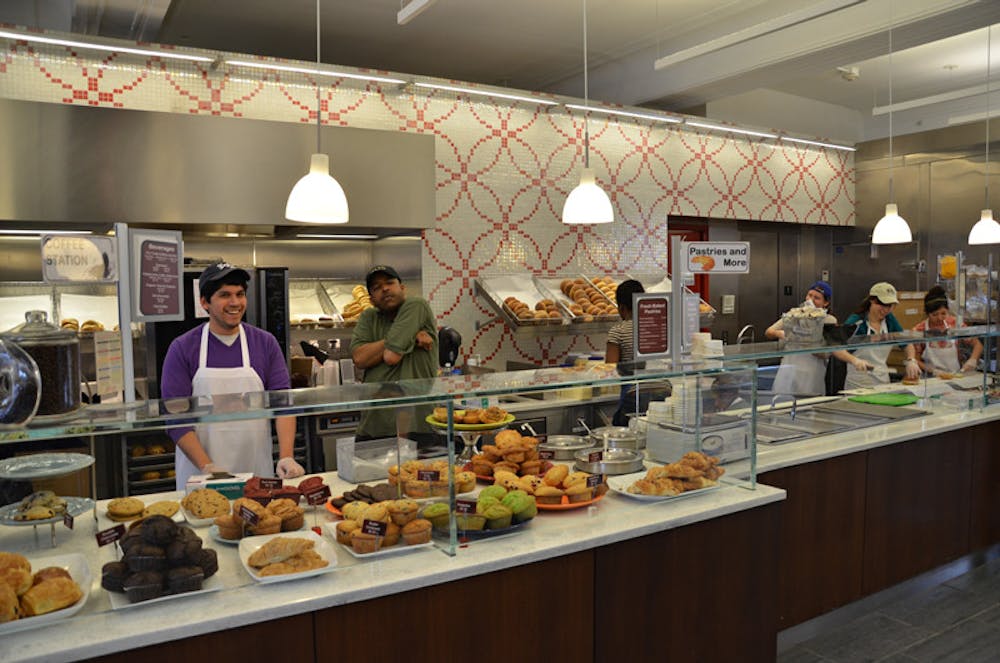Last week, Nicole Salvador ’15 spent 15 hours in class and 35 hours working.
In addition to her usual 15 hours a week at the Brown Annual Fund Call Center, Salvador was stage-managing the imPulse dance show.
Instead of pursuing extracurricular activities, Salvador works many shifts so her parents don’t have to cover her personal expenses, she said.
“I have a lot less time to be a student and a person at Brown, but it’s important for me to have this job” at the call center, she added. “Honestly, it’s just a matter of prioritizing.”
While many students balance employment with academics, extracurricular activities and other commitments, each has a different threshold for the number of hours he or she can commit outside the classroom.
In interviews, many students working over a dozen hours a week agreed that having a job helps them stay motivated, gives them a sense of independence and is overall a positive and rewarding experience.
But working the number of hours equivalent to a part-time job can also present unique challenges: Some students find they must choose between employment and social life.
Timothy Genovese ’16 said he often sacrifices his social time in order to work at the Olney-Margolies Athletic Center’s welcome center and as a lifeguard at the Jonathan Nelson ’77 Fitness Center, usually 12 to 15 hours a week. Though Genovese said his schedule limits the time he has to spend with friends, he added that the community at his workplace is “one of the top reasons for going to work every day.”
Cellie Pardoe ’16 works 15 hours a week at multiple jobs — as a shift supervisor at the Ivy Room and in the management office of Brown Dining Services. But she said she does not have to give up social time for work time.
“I don’t consider it a balance with social life because I’m really close with my coworkers,” she said.
Salvador, Genovese, Pardoe and Caroline Fenn ’14 all said working around 15 hours a week did not interfere with their academics.
Fenn, who works 15 to 18 hours a week for BuDS, said management usually provides a substitute if an employee has an academic conflict.
“Working makes it easier to get schoolwork done because I don’t have free time to procrastinate,” said Genovese, who is taking five classes this semester.
“I don’t have the luxury of being able to put it off, which forces me to get my work done,” he said.
Salvador expressed a similar sentiment. “I feel like I have more time because I have less time,” she said. Students will always feel like they have too little time, regardless of their commitments, she added.
But for other students, having insufficient time for academics is often a reason for quitting jobs at BuDS, said Pardoe, who helps hire students for BuDS.
Salvador said working many hours has given her a unique perspective that other students may not understand. “At Brown, class is one of the things that we don’t really talk about,” she added.
Pardoe, who is also a facilitator for $ocial Classmates, an organization that sponsors discussion about class disparities, said socioeconomic class is less of a “taboo topic” in the student workplace than in other settings.
Students who participate in campus employment also have a significantly lower dropout rate at Brown, said Jim Tilton, director of financial aid. The higher retention rate is attributed to these students’ sense of community involvement and the stability in their schedules, Tilton added.
While every student has the opportunity to work on campus, Federal Work-Study is also part of the standard financial aid package, Tilton said. Approximately 44 percent of students are awarded need-based scholarships.
“Each student receiving (a) University scholarship has a $2,700 work component in their financial aid package, which allows them to work on or off campus and receive a paycheck every two weeks,” he said. Tilton added that many students choose to use scholarship money as a substitute for the work-study component of their aid package, but some may choose to work more than $2,700 worth of hours.
“Financial aid is not where it stops,” Salvador said, explaining that many students supplement their aid packages with extra work hours.
The Office of Financial Aid recommends that students work eight to 12 hours per week to meet the requisite work-study amount. “We generally hear back from students that that is a reasonable amount to work,” Tilton said, adding that it is conditional on the functionality of the aid package’s other components.
“Federal Work-Study or Campus Employment is a work opportunity — not a requirement,” according to the University’s Student Employment website.
Many students in campus employment do not receive financial aid. Pardoe estimated that 50 percent of BuDS workers are on Federal-Work Study.

ADVERTISEMENT




